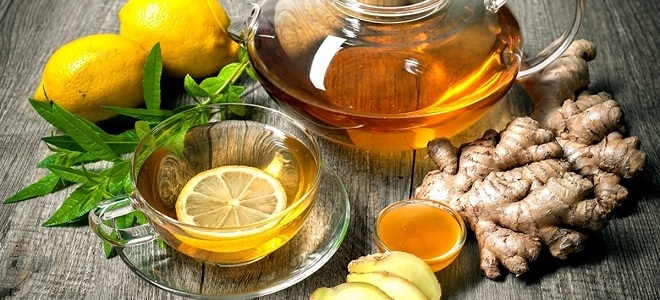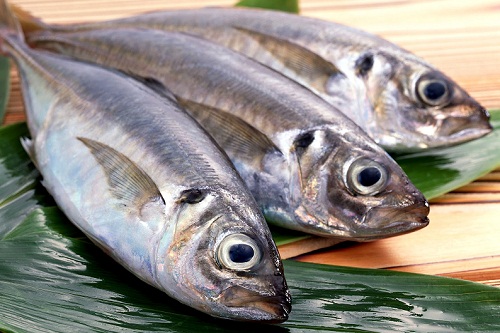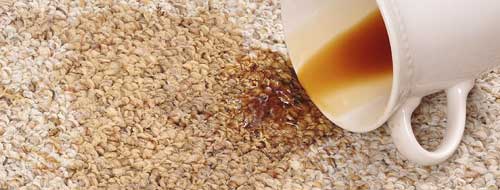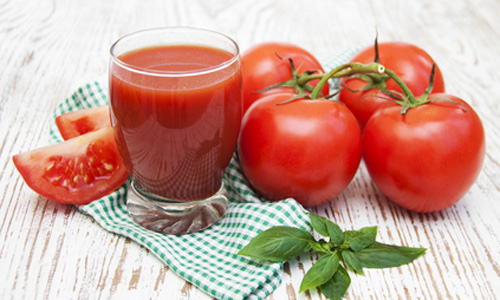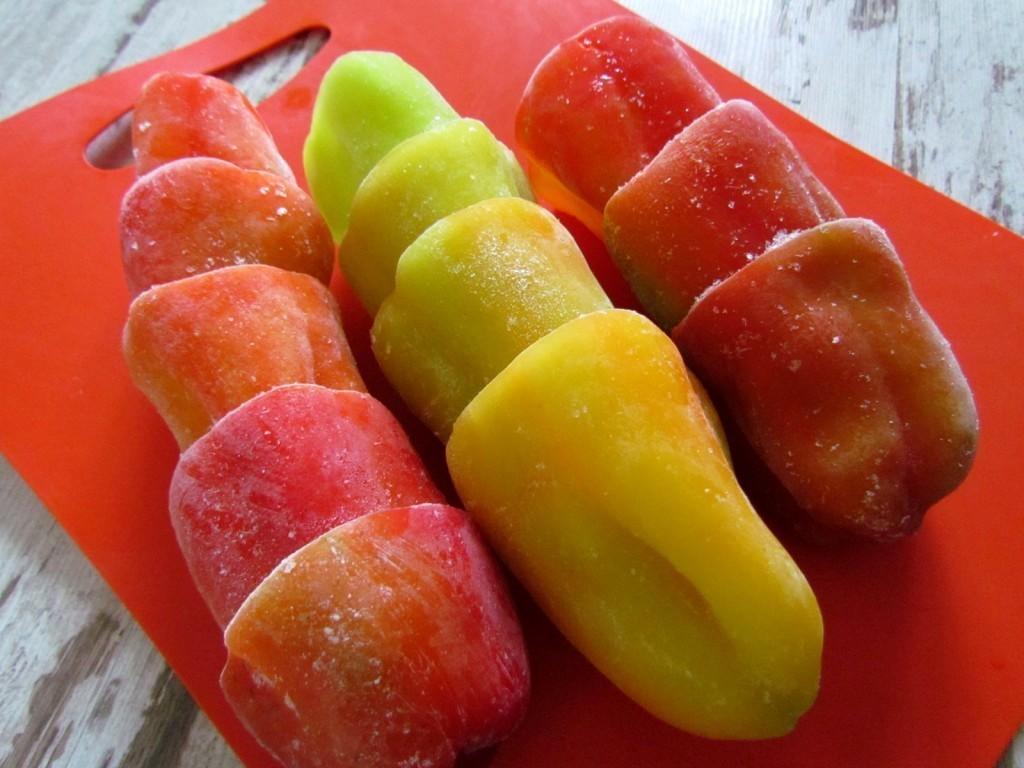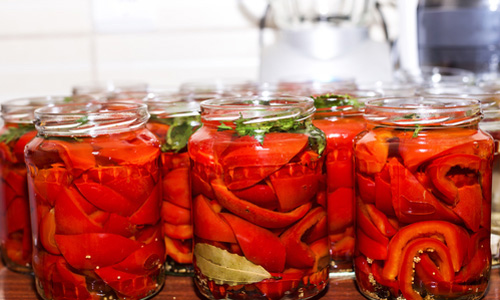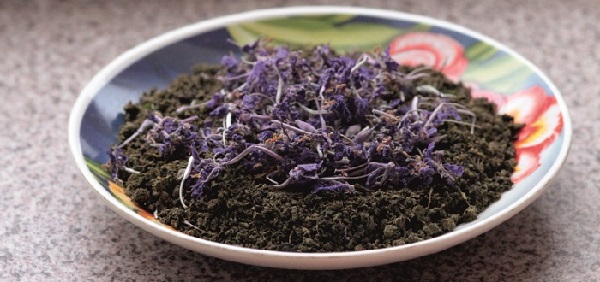Sambuca drink what is it and how to drink it properly? Sambuca - aniseed liquor from Italy.
The composition of sambuca is a question that people at least once puzzled themselves when they first tried this drink with an unusual aroma and rich aftertaste. What is this type of alcohol?
Drink from Rome
Sambuca is a drink whose roots originate in Italy. It is an Italian liquor with the smell and taste of anise. More often it is a clear liquid, sweet, but not sugary. Its traditional strength is in the range of 38-42%.
Sambuca is considered an Italian drink, but its ancestor is star anise liqueur, brought to Italy by Arabs in the Middle Ages. The Arabs themselves used this liquor as a medicine, usually after a meal. The healing properties of the drink are still relevant. Sambuca helps to improve digestion, fights colds and coughs well, strengthens the immune system. And she perfectly invigorates and fills with a surge of energy.
There are several varieties of this liquor:
- white - classic, transparent;
- black sambuca - which includes various spices and spices (licorice, licorice);
- red - with an extract of wild berries.
Sambucu in its modern form was developed experimentally by Angelo Molinari in 1945. He managed to create a unique recipe with a magnificent bouquet. Molinari owes its name to anise liquor. Subsequently, the author of the recipe opened his own company for the production of this drink - to this day it is successfully developing in the Italian market.
What is sambuca made from?
It is impossible to say exactly what sambuca is made of - the liquor recipe, the technology of its manufacture are the strictest secret of the producers that they do not want to share. It is only known that the composition of this drink includes:
- wheat alcohol;
- sugar;
- star anise;
- elderberry extract;
- secret set of spicy herbs.
The first three ingredients are used to produce a classic, white, sort of drink. Wheat alcohol is responsible for the strength of alcohol - it is obtained by fermentation of wheat. The sweet taste of liquor is achieved due to the content of sugar in its recipe. A star anise gives the liquor a traditional bouquet that cannot be confused with anything. It was the content of anise in the composition, sambuca was used earlier as a medicine.
Anise in the composition of sambuca determines the properties of the drink. This plant has a number of healing effects that are transferred to the Italian liquor itself.
What is black and red made of sambuca from? In non-classical varieties of this alcoholic drink, the remaining known components are used. Red liquor is obtained thanks to an extract from elderberry - it makes sambuca bright and quite original. Spectacular black liquor is made with the addition of herbs and spices. His color is more close to dark blue than black - because of this, the dark sambuca is sometimes called the “Black Passion”.
How to distinguish a real sambuca?
Authentic Italian liquor has a sweet taste that should not give off alcohol or be cloying. For a real sambuca, a light anise flavor and a pleasant lemon aroma are characteristic, but the aftertaste should be long and very rich. The consistency of the drink should not be too liquid, but excessive viscosity is also not allowed. True aniseed liquor should also have a tonic and invigorating effect.
This drink is very often found on store shelves, and is also an indispensable attribute in bars. It is usually served either in pure form or as part of a variety of cocktails. Sambuca is appreciated by both men and women. The stronger sex respects her for a strong degree, and the weak - for the sweetness and ease with which she is drunk. And anise liqueur is an excellent way to cheer up. That is why she is preferred at various parties and events.
Sambuca (Sambuca) is another national variation of “anise” - strong alcohol (often alcohol), infused with anise (must be included) and other herbs, which are the carefully guarded secret of the producer. A single recipe does not exist, each company has its own ingredients and proportions. Italian liquor is the closest relative of French pastis, Turkish crayfish and Greek ouzo.
According to legend, the drink came to Europe from the Saracens, which is hinted at by the frankly Arabic sound of the name itself. However, the exact origin of the word "sambuca" is unknown, there are several versions on this score:
- From the Latin Sambucus Nigra - "black elderberry". Given that this ingredient may also be part of the drink, the version seems quite plausible, as the authors of the Oxford dictionary say, however, the largest sambuca producer, the company Molinari, refutes this interpretation of the name.
- From the Arabic word zammut - "anise." The oriental drink, on the basis of which the sambuca was then created, was called “zammut”.
- From a small town in the province of Tuscany.
- From the type of Arab ships on which the "proto-sambuca" was transported to Rome.
The origin of sambuca is closely related to the pharmacy - the drink came from medicinal herbal preparations and medicines. Initially, aniseed tincture with various additives was taken exclusively for medical purposes, then they began to drink after meals to improve digestion, and only then they began to buy sambuca for feasts.
It is not clear how ordinary anise "evolved" to sambuca. There is a legend that one peasant once accidentally dropped flowers and berries of black elderberry into a tincture. The drink was spoiled, so the zealous owner put it away so that he could later use it for household purposes. After some time, all the alcohol ended at the daughter’s wedding, and the peasant took out a defective anise, hoping that the tipsy guests would not notice the difference. However, the participants in the feast not only felt a new taste, but also appreciated it - and sambuca appeared.
The official history of sambuca began in 1851, when Luigi Manzi from Civitavecchia launched the first alcoholic drink of that name. However, industrial production was still far away - it began only in 1945, and also thanks to the Italian. Angelo Molinari developed his own original sambuca recipe, founded a company for the production of a new drink, and eventually “captured the world” - today Molinari owns 70% of the sambuca market in Italy.
Although the appearance of sambuca is covered with a certain halo of secrecy, this did not prevent the drink from “fitting” tightly into modern club culture. Sambuca is drunk in cocktails, with ice, “pure” and with additives. Most connoisseurs of this liquor love the classic "flies" serve - that is, three coffee beans, symbolizing health, happiness and wealth.
 Grains symbolize health, happiness and wealth
Grains symbolize health, happiness and wealth Before use, the liquor is set on fire, thanks to this, the grains are roasted and give the drink a characteristic aroma. In general, sambuca is often drunk with coffee: the bitterness of cocoa beans is perfectly shaded by sweet anise tincture.
Features of production. Sambuca is an “author's” and not a “folk” drink, therefore the exact manufacturing technology (as well as the list of ingredients) is kept in strict confidence. However, it is reliably known that various herbs (primarily anise) insist on alcohol, the resulting liquid is subjected to triple distillation. Then the drink is diluted with spring water and sugar syrup, fragrances and additional ingredients are added. Finally, the tincture is kept for several weeks, filtered and bottled.
In addition to the already mentioned companies Molinari and Manzi, well-known manufacturers of sambuca include Pallini, Luxardo, Barbero, Casoni, Ramazzotti. This drink for a very long time remained exclusively in the Italian possession and was not exported outside the country; it could be tasted either directly on the Apennine Peninsula or in trattorias (Italian-style restaurants).
Working at the bar, I was a little surprised by the fact that many people did not know how to drink sambuca. In my understanding, this is a drink, which for some reason still belongs to the "elite", which has long been equal in popularity to tequila or absinthe. On the one hand, liquor has become popular thanks to the club culture, because the process of its use looks enchanting and exciting. Club life does not appeal to everyone. But today sambuca can be bought in almost any supermarket and the price has long ceased to “bite”. I told how to drink absinthe in a previous article (you can find it), it's time to dispel the myths about sambuca a bit.
Italian Sambuca Liquor - Essence
So, sambuca is an Italian liquor with a pronounced anise flavor. This is not aniseed vodka, as some sources like to write - it is something completely different. In addition, sambuca is not a liquor in the usual sense of the word, that is, it is not a sweet drink of small strength. It is rather a bitter tincture with added sugar. The process of its production is similar to, that is, at first infusion is made, and only then it is distilled - you can read more about making home sambuca. The alcohol content in sambuca is about 38-42%. She insists on anise stars and various fragrant herbs; the recipe is kept secret by every manufacturer.

The drink is credited with a number of useful properties, which, however, explains its pharmacy taste - many identify the sambuca with a children's cold medicine, pectusin. I have observed the therapeutic effect repeatedly 🙂 A well-warmed sambuca helps with colds, relieves cough, and has anti-inflammatory effects. It is also believed that it strengthens the immune system. It is known for sure that the drink stimulates digestive activity: it stimulates appetite as an aperitif, and improves digestion as a digestif.
Why is sambuca burning? The question is reasonable, because the fortress in it is like in vodka, but the density is much higher due to the high sugar content. Fusel oils burn, which have a low combustion temperature - the flame is bright blue. This means that sambuca should be consumed in small quantities, since various impurities strongly hit the body and after a heavy libation hangover can hardly be avoided.
As for the post-Soviet space, the drink we have received is quite widespread - it is an integral attribute of any bar, restaurant, and even more so a nightclub. In the domestic market, the drink is represented by several popular brands: Molinari, Itaka, Pallini. You can also find rarer brands: Sambuca Dei Cesari Luxardo, Ramazzotti, Lazzaroni 1851, Casoni and Vaccari. However, they drink this drink correctly extremely rarely. Let's fix it.
How to drink sambuca at home
Let's move on to the most interesting. The culture of the use of sambuca is largely formed due to its properties to burn well. It is successfully used by bartenders, offering their guests not only a drink, but also some fun. I identified 10 main ways to drink sambuca that I came across and tried, if not on myself, then on my guests in bars 🙂
In pure form. As mentioned earlier, sambuca is both a good aperitif and an excellent digestif. Therefore, it can be drunk in its pure form before and after meals. 40-50 ml is enough to stimulate appetite or improve digestion.
With water or ice. Unlike whiskey (meaning the taste and aroma of whiskey with ice are faded, which is described in detail in the article), sambuca behaves perfectly with ice - it quenches thirst well, and cold water helps to fully reveal the taste of the drink. Like absinthe, sambuca becomes cloudy when water is added, due to the content of essential oils in it, which form an emulsion with water. The amount of water is selected individually, to taste.
Frozen. Put the bottle in the freezer for several hours. After you get a great soft drink that you can drink in pure form with a slice of orange or lemon.

It is suitable just for medicinal purposes: you need to set fire to the drink and let it burn out, and then drink it warm, without having a bite. So sambuca is not drunk everywhere.
Choose quality dishes with thick walls, as heated glass may burst. Be careful with a burning drink - it ignites quickly and can leave burns!
Italians are used to drinking this drink a little differently. They do not set fire to the sambuca, considering it blasphemy over the drink. In Italy, it is used in more traditional ways.
Sambuca con mosca (literally "with flies"). In a glass with sambuca put 3 whole grains of coffee, which symbolize health, wealth and happiness. In many sources, this method is accompanied by setting the drink on fire, but in Italy, as noted above, the drink is not set on fire - grains act as an appetizer and give the sambuca a piquant flavor.

Caffe corretto. A very popular drink in Italy, where coffee is treated with great respect. Sambuca is added to coffee instead of sugar. Most often, to 4 parts of espresso it is enough to add 1 part of anise liqueur. The amount can be increased to 2 parts (i.e. 30 ml of espresso and 15 ml of sambuca). Also, liqueur can be served separately - drink it in small sips and drink aromatic coffee of strong roast, which is so loved by hot-tempered indigenous people of Italy.

Two glass way. It is also sometimes called the "method with a powerful effect." Most often in this way they drink sambuca in night clubs. We need cognac (snifter), rox (a glass with wide straight walls), a napkin, a straw, a saucer, a lighter, 3 coffee beans and a sambuca (25-50 ml). Grains in this case are a tribute to the classic Italian recipe - they need to be put in cognac, and add sambuca there. Before setting fire, prepare a “platform” for the vapors: put a napkin with a hole in the middle on a saucer, where you pass the short part of the tube.

Put cognac on the rox, lightly warm it with a lighter and set fire to the contents. Then rotate the burning glass by the leg around its axis for 10-60 seconds, depending on your preference (whether you like hot or slightly warmed sambuca). After pour the burning sambuca into the rox and cover it with cognac on top - the flame will go out. Transfer the inverted cognac on a saucer. Drink sambuca and breathe through a tube in pairs of cognac, chew the grains. The sequence can be changed: first breathe in pairs, and then drink a drink. To increase the effect, you can drip the rest of the drink on the bottom of the inverted cognac and inhale them through the short tube with your nose. We called it “sambuca with cocaine” 🙂
Important. Take lightly roasted coffee grains - the sprinkled ones will give an unpleasant bitter taste!
Better to see once:
Extreme way. This option is exclusively club and requires some skill from the bartender. In the first case, you need to pour sambuca into your mouth, wipe your lips dry and throw your head back without closing your mouth. The bartender should set fire to the drink right in your mouth. When you feel a slight fever, close your mouth and swallow the drink. This method makes an impression, but the danger here is minimal. In the second case, the drink is heated in cognac and poured into the mouth directly burning. Do not try to repeat this at home, as this method of use requires skill and the firm hand of an experienced bartender. It is very important not to get scared and not to close your mouth; for insurance, the area around the mouth can be moistened with water.
Sambuca at home. Take a ceramic teapot and fill it with boiling water. Then, drain the water from the kettle and immediately add 50 ml of sambuca. Shake the contents and drink, but before that, exhale deeply and inhale the vapors of the drink through the spout of the kettle.
As a part of cocktails. Sambuca is good in that it has a high density, which means that it can be used as a basis for. Its transparency also plays into the hands, which allows you to make the drink even more spectacular by dropping Beilis or Grenadine (pomegranate syrup) into it. It is rarely added to long drinks, because anise flavor dominates the cocktail and interrupts the rest of the ingredients. The most popular shots with sambuca are Hiroshima (sambuca, Beilis, absinthe, grenadine), Kazantip (Kalua, sambuca, grenadines, Beilis and absinthe) and, probably, Audi (sambuca, Malibu, Cointreau, white rum).
I also heard that sambuca can be drunk with cold milk, but not mixing, but drinking. It's hard to imagine, but worth a try. Now you know how to drink sambuca in almost all currently known ways. Tell your friends and acquaintances about this or don’t tell - you will be the custodian of the mystery of drinking some alcoholic beverages 🙂 Read our magazine, drink only the good and do it right!
P.S. How not to drink sambuca:
This alcohol can be ordered in any respectable bar, they write about it in newspapers and speak on television, and more recently, it has been associated with luxurious life and fun. It's about sambuca - Italian aniseed liquor, which has conquered the whole world for 50 years. We will find out what this mysterious alcoholic beverage is and why it has become so popular.
Sambuca - one of the types of strong Italian liquor with anise aroma (vegetable spice), made from wheat alcohol, sugar, berries and elderberry flowers with the addition of star anise and a set of aromatic herbs. The exact composition of sambuca is kept secret by the manufacturers.
In most cases, sambuca has a transparent color, but sometimes its red and dark species are found. It differs from other alcohol in its sweet taste, giving medicine, and a specific aroma. The strength of sambuca ranges from 38 to 42 degrees, which is quite a lot for sweet alcohol.
 Burning sambuca
Burning sambuca A Brief History of Sambuca
There are several versions of why aniseed liquor is called Sambuca. First, it was believed that the sambuca included an extract from black elderberry (Sambucus nigra), but the world's largest producer, the company Molinari (Molinari), stated that black elderberry was not used and had nothing to do with the name of the liquor.
The second - historians believe that the name "Sambuca" comes from the Arabic word "zammut", which translates as "star anise" - one of the main components of sambuca. According to experts of the alcohol market, this version is the most plausible.
Another hypothesis was that the sambuca was named after the ship that first transported this alcohol from the East to Europe. The Italians believe that sambuca comes from the name of one of the cities located in the province of Tuscany.
For the first time, tincture based on anise was brought to Rome by the Saracens (the Syrian nomadic tribe) in the Middle Ages. At first it was used as a medicine, but after a few decades they began to drink tincture for the sake of pleasure after eating. It is the brought oriental drink that is considered the progenitor of sambuca.
The inventor of the modern sambuca that we know is a winemaker from Italy Luigi Manzi. In 1851, he first introduced his drink Sambuca MANZI di Civitavecchia. But mass production of liquor began a little later.
In 1945, Angelo Molinari founded the world's first sambuca factory. Conducting experiments with a mixture of wine spirits and herbaceous tinctures, he created an excellent recipe, which later became known as Sambuca Extra.
Sambuca is a drink that came to us from Rome. In modern Italy, this word is called aniseed liquor. But other countries can boast of its analogue: Greece - “ouzo”, France - “” and “Anisett”, Turkey - “crayfish”, Bulgaria - “mastic”. In fact, the basis of all of them is anise tincture.
As for sambuca, the liquor’s external data is different: it can be both transparent and color (black and red). Chromaticity is determined by additives in the composition of herbs and spices. This makes the drink more diverse and tastes when other notes are already mixed with the anise's liqueur sweetness.
The standard strength of alcohol is 38 - 42 degrees, but this does not interfere with making it soft and delicate in taste. The aftertaste of sambuca is usually long and rich.
In the 19th century, it served as a medicine whose healing properties have been preserved to this day. Sambuca improves digestion, strengthens the immune system, treats coughs and reduces the symptoms of colds. It has anti-inflammatory properties and improves vitality.
Now sambuca is an indispensable attribute of bars, where it is served both in pure form and in cocktails. However, the drink can be found on the shelves of the store. In this case, do not be scared when you see that all the labels are different. Sambuca does not have standard labels, but you should find classical notes on them, such as fortress, bottle volume, country that produced alcohol, manufacturer's address, etc.
The well-known brands of sunny Italy are considered to be the best - Molinari and Mazzari, Ramazzotti, Luxardo, and Barbero, Pallini and Manzi )
The first in this field was Angelo Molinari, who noticed how wonderful this alcohol is combined with the taste of coffee. He was the first to invent an original way of drinking sambuca “with flies,” that is, with three grains of coffee dipped in a glass of a burning drink. 
If the alcohol you have purchased is not a fake, then it will have a sweet taste (without sugary taste and a taste of alcohol) with a slight taste of anise and lemon aroma, a strong aftertaste. The drink should not be too viscous and not completely liquid, and simply must invigorate.
What is sambuca made of?
The manufacturing techniques of sambuca, its recipe and true composition are kept in real secret. Only the main components are known: alcohol obtained from wheat, sugar, anise (star and ordinary), extract from elderberry fruit and a secret composition of herbs ..
Herbs and spices in the composition vary and give the drink “color”.
If in the classic transparent (white) sambuca in the ingredients you can find only the above composition, then in black alcohol add licorice, licorice and spices. This alcohol looks more spectacular than the traditional colorless one and actually has not a black, but a dark blue hue. For this, she is often called "Black Passion."
Berries add red color to sambuca, making the drink bright and very original.
However, regardless of the color and composition of sambuca, both men (for their strength) and women (for the sweetness and ease of drinking) liked it.

